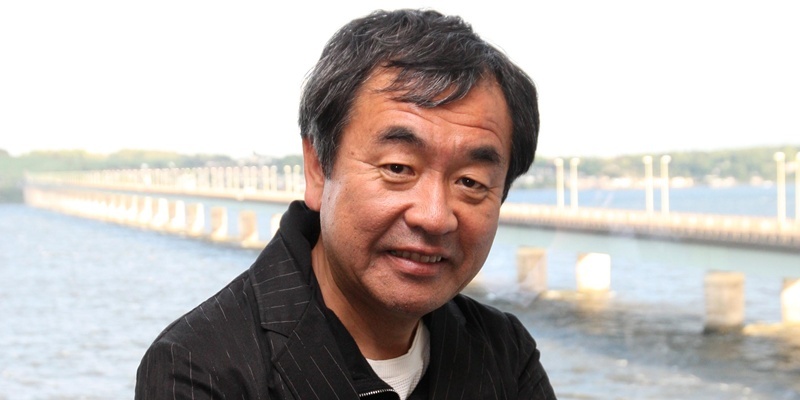The Japanese architect of the V&A at Dundee has said he was always confident his spectacular design would be chosen as the city’s museum.
Kengo Kuma, who delivered two public lectures about his plans for the V&A at Dundee on Saturday, told The Courier he had been inspired by the energy surrounding the project.
More than 120 architects from around the world entered the competition to design the £45 million structure. Six of these made it to a final shortlist and Mr Kuma’s design was announced as the winner in November last year.
Now plans for the museum, which will be built on a pier-like structure out on the Tay at Craig Harbour, are moving forward. A team of architects from Mr Kuma’s Tokyo practice will arrive in Scotland in September and remain in the country until the museum which will be built, as far as possible, from locally-sourced materials opens in early 2015.
Although already a world-renowned architect, Mr Kuma said he was excited to be given the chance to create a signature building that will become a Scottish icon, as well as one for Dundee.
He said, “When we first entered the competition, the members of my practice were all very satisfied with the design, so we were very confident about it.
“A building like this can change the city itself and change Scotland. That’s the pleasure of the architect they can get energy from ambition like this.”
Mr Kuma also said the building will be constructed from reconstituted stone originally sourced from Tayside.
“We always try to find that sort of local material,” he said.
He added that he wants the museum, which will have free entry, to become an extension of the city which people visit regularly, not just for exhibitions.
“Whenever I have time in a city I always go to the museum and have a coffee,” he said. “I use it almost like a living room. Museums of the 21st century are not just a space for art it’s a space for communication; a reading room in the city.”
Mr Kuma delivered both his lectures at Dundee University’s Dalhousie Building. Originally supposed to be giving only one talk on Saturday evening, an additional afternoon event was scheduled because of overwhelming public interest.
Overflow lecture theatres were in operation, with the event being beamed to audience members in a separate room via CCTV.
Mr Kuma discussed the main differences between 20th- and 21st-century museums, arguing that the public now want to engage with and feel a sense of ownership of such buildings at all times not just when viewing exhibitions.
He took the audience through his early inspirations for the Dundee building and, with the help of images, revealed how the design process unfolded.
Mr Kuma also spoke in detail about some of his other projects, both in Japan and in Europe, to give the audience a feel for the buildings he and his team have already created.
The Scottish Government will pay for a third of the cost with the private sector and other sources of funding, such as the lottery, providing the remainder.
The project is being delivered by Design Dundee Ltd, a partnership between the V&A and Dundee City Council, Dundee and Abertay universities and Scottish Enterprise.
